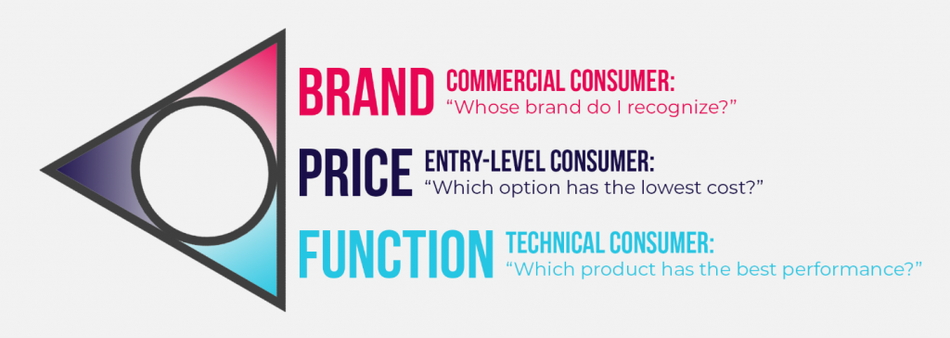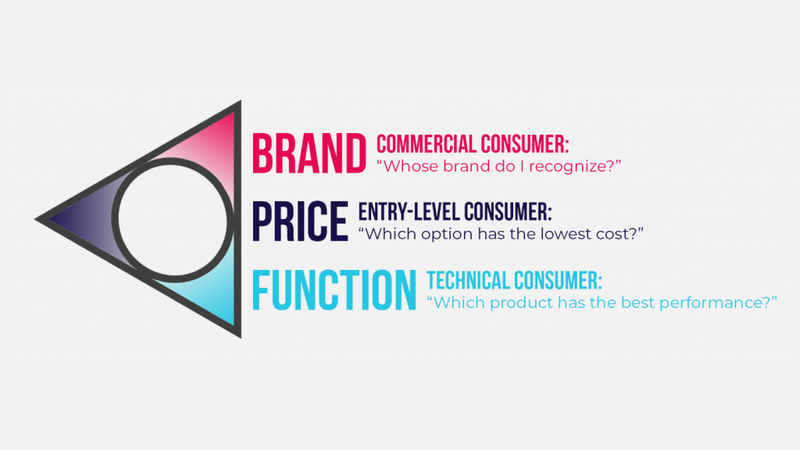Functional Aesthetics in Additive Manufacturing
Color, Material, and Function (CMF) are three things to consider when designing a new product. When used appropriately and combined with additive manufacturing, they can help set your product apart from competition when others have brand recognition, lower price, or better technical specs.
This article was first published on
ntopology.comAs a consumer in 2020, it is a rare occasion to shop for something that does not have competition. Unless it is a specialty product or they require a specific variant for their purpose, it is a fair assumption to make that there will be a choice that needs to be made. This is when the buying experience truly begins – when there is a necessity to choose one product amongst many.

When someone searches for a product to fit their needs, there are normally three product “leaders” that stand out. The first of these is the product that has the most recognizable brand. For headphones, this is Bose while for cellphones, it is Apple. Products that these companies produce stand out purely from their brand recognition. Simply by having the band logo on the packaging, the consumer already has high expectations for the quality of the product and views it as being valuable.
When a consumer makes the decision to start looking for a product, these brands have an advantage as they are already in the consumer’s head before the other products are even seen. These products have an advantage which skews consumers toward choosing them when the consumer does not research their options. This is not to say that the products with the biggest names do not have quality – it just means that they aren’t required to convince all of their customers with their technical specifications as many will purchase the product without comparing them to other products.

On the other end of the spectrum is the product with the best technical specifications. These products start off with a disadvantage in that they must convince the consumer that they can provide a superior product than what the brand they have in mind has to offer. To be successful, these products need to stand out with their technical specifications and features. This means that they tend to sell more of their products to consumers who do research before committing. Once they have won over a consumer, it is likely that they will see future purchases from this person. This is because the challenge of getting into the consumers head has already been overcome. Now when the user goes to buy another product, they already recognize the technical product’s brand and knows the quality they put into their products.

There is one factor that the previous two leading product architypes do not cover with their strengths – cost efficiency. A consumer looking for an entry-level product or a product they only intend to use for a short time is not likely to go for the big-name product or the one with the best technical specifications. Instead, they are likely to go with the product that has the lowest monetary cost. It is important to note that this does not mean the “cheapest product,” as the product the consumer purchased still needs to meet the baseline technical requirements. This could be the consumer needing headphones that have Bluetooth functionality or needing a stopwatch that can display the time in milliseconds. If it meets the bare minimum the consumer needs, the rest of the specifications do not make a difference for this consumer.

These are the three leading product architypes a customer is likely to find when they search for a product to fit their needs. When designers design products, they must consider all the potential needs for their target consumer demographic. People are complicated. Everyone has different needs and different situations that influence their expectations of the products they purchase. This is the reason designers define their target consumer during their design process; a successful design requires prioritization. Part of this is defining the market space that the product is meant to exist in. Is the new product able to rely on brand recognition to stand out? Or does it need to have impressive specifications to grab the attention of the consumers that do their research? These are some questions that designers need to consider during their process as it impacts the success of the product.
Unfortunately, even with all the development time in the world, it is impossible for a product to be all three of these architypes at once. No product can have the best brand recognition, best technical specifications, and the lowest cost without being the only product in their market. For a new product going into a market, it can be difficult to be even one of these three.
How can a product succeed when they do not have the advantage of being one of the three leaders in these categories?
When a product cannot rely on being one of the three leading architypes in their market, there is a fourth pillar to the design space that comes into play – personal appeal. When the product is not the most easily recognized, does not have the most powerful specifications, and does not have the lowest cost; the product needs to connect with the consumer on a personal level. This is where CMF design comes into play. CMF design is design that focuses on the color, material, and finish of the product. These three parts of a design communicate to the potential user how the product will fit into their life.

Colors evoke emotions, materials communicate quality, and the finish of the product tells the consumer how to interact with the product. Whether intentionally or not, these aspects of a design communicate with the consumer. The most successful designs are ones that consider the impact that these have on the consumer’s perception of the product. Just like how being one of the three leading architypes in a market gives a product an advantage, so does the CMF design of the product. Being able to communicate with a consumer on a personal level is invaluable in the world of product design.
This article was first published on the nTopology blog.
